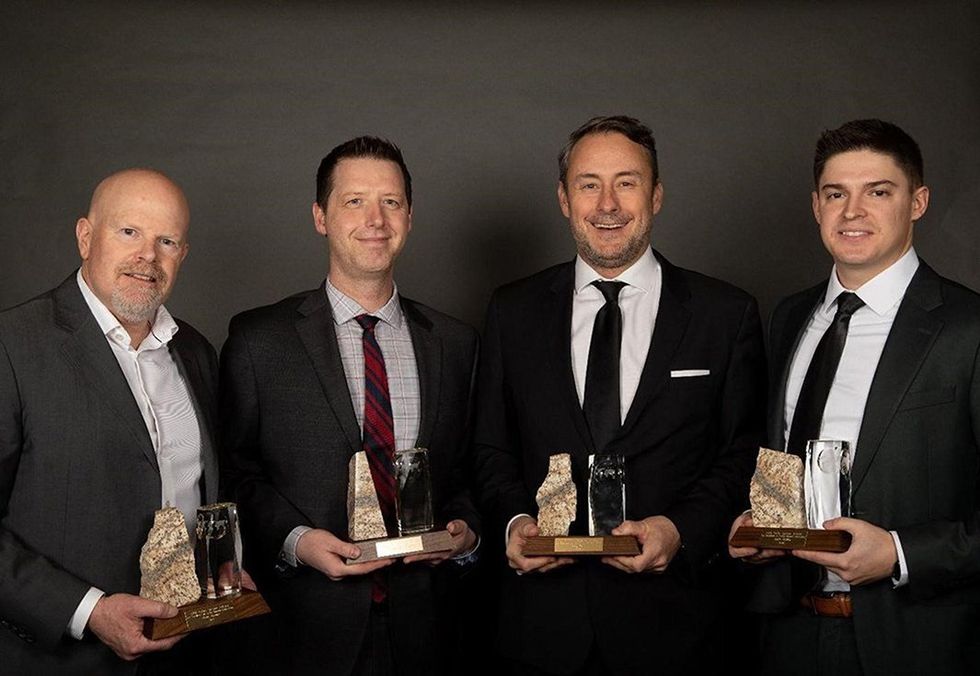Overview
Cosa Resources (TSXV:COSA, OTCQB:COSAF, FSE:SSKU), is a Vancouver-based uranium exploration company with a portfolio of highly prospective assets in Saskatchewan’s Athabasca Basin region.
Cosa’s portfolio of uranium projects comprises more than 160,000 hectares of land within or proximal to Saskatchewan’s Athabasca Basin. Each project captures portions of highly prospective northeast trending uranium corridors and district-scale structural corridors, such as the Cable Bay and Grease River Shear Zones and the Larocque Trend.
The Athabasca Basin region is well known for hosting some of the world’s largest and highest-grade uranium deposits within these prominent and continuous magnetic low corridors; examples include Cameco’s McArthur River mine and IsoEnergy’s Hurricane deposit. Cosa’s projects are considered underexplored and boast strong potential to host world-class uranium deposits.
Supported by a team of technically focused and successful geologists and mining executives, Cosa believes that a combination of new ideas and aggressive exploration in underexplored areas has the potential to yield the next Tier 1 uranium discovery.

Left to Right: Steve Blower, Andy Carmichael, Craig Parry, and Justin Rodko.
Recipients of the AME Colin Spence Award for 2022.
Cosa has strategically assembled a management team with a history of success in the Athabasca Basin. With well over a century of combined uranium experience, Cosa’s management team has been involved with several uranium discoveries in recent years. Chairman Steve Blower was part of the discovery team behind 92 Energy’s Gemini zone, IsoEnergy’s Hurricane deposit, and Denison’s Gryphon deposit. For his role in the Hurricane discovery, he was co-recipient of the AME 2022 Colin Spence Award for excellence in global mineral exploration, alongside fellow Cosa team members Andy Carmichael, Justin Rodko and Craig Parry.
Uranium Markets
With the world's shift away from fossil fuels, nuclear power has been gaining popularity in recent years. As of now, there are around 440 nuclear reactors globally, consuming roughly 62,500 tonnes of uranium (tU) per year, and the demand for the metal is only growing as more reactors come online. This has created a consistent and growing need for new sources of uranium to keep up with the increasing demand.
This rise in long-term demand for uranium has resulted in a growing spot price, reaching US$53.20 in September 2023, an increase of 14.72 percent from the previous month and 29.92 percent from last year. Given the current geopolitical climate in pursuit of cleaner power and reduced carbon emissions, nuclear power has become increasingly popular as an alternative to fossil fuels. It’s clear that new sources of uranium are necessary to meet the growing demand for the metal, which is now included as one of the Canadian Government’s 31 critical minerals.
In addition to a strong focus on uranium exploration and commitment to ESG practices, Cosa Resources also prioritizes strong corporate governance. The company believes that effective corporate governance is essential for building and maintaining trust with investors and stakeholders, as well as ensuring the long-term success and sustainability of their business. To support this goal, Cosa Resources has established a strong board of directors with diverse backgrounds and expertise. The board provides oversight and guidance on key strategic and operational decisions, and they are responsible for ensuring that the company operates in compliance with all relevant laws, regulations, and ethical standards. Cosa has additional support from Inventa Capital Corporation, a privately held merchant bank that specializes in financing and supporting companies that explore for and develop mineral deposits to fuel and support global energy and technology needs.
Company Highlights
- Over 160,000 hectares of underexplored uranium assets within the Athabasca Basin region - the heart of the Canadian uranium mining sector.
- Projects near to or within highly prospective uranium corridors and district-scale structural corridors such as the Cable Bay and Grease River Shear Zones, and the Larocque Trend.
- 100-percent-owned Ursa property covers 65 kilometers of the fertile and highly underexplored Cable Bay Shear Zone uranium corridor.
- More than 10 high-priority target areas identified by airborne surveying and comprehensive conductivity modelling at Ursa and Orion.
- Recent project acquisitions resulted in the addition of Solstice, Polaris, Eclipse to the company’s portfolio, and further expansion of the Ursa, Orion and Astro projects.
- The company acquired the Aurora Project in the Athabasca Basin, Saskatchewan adding more than 16,800 hectares to Cosa's 100 percent owned exploration portfolio.
- A management team comprised of technically focused and successful geologists and mining executives with a proven track record of discovery and development in the Athabasca Basin.
Get access to more exclusive Uranium Investing Stock profiles here
